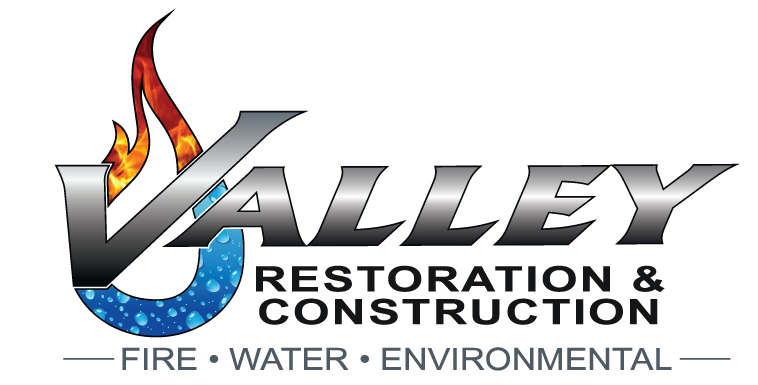There are so many reasons that can cause water damage: floods, heavy rains, a burst pipe while you are on vacation, drainage problems, or snow melting and seeping through your basement. Whatever the cause, it is devastating to see water flooding your home.
The best thing to do when water damage happens in your home is to call a mitigation and restoration company like Valley Restoration and Construction right away. Our first task will be to extract the water, evaluate the damage, and move on to mitigation and restoration.
It only takes 24 hours for fungus and mold to develop where water is stagnating. Not to mention that hidden water is the perfect setting for mold to settle in. That is why water extraction is crucial for the soundness of your home’s structure and for mitigating further damage.
If you wonder what water extraction entails and how it differs from water mitigation, this guide will help you better understand the work we do here at Valley Restoration and Construction.
What Is Water Extraction?
Water extraction involves the removal of water from your home. It needs specialized equipment like pumps, dry systems, and vacuums that pump water out of floors, ceilings, and walls. Once the water has been extracted, we can move on to emergency water mitigation to make sure the building is safe.
An emergency such as a flood can fill your home with immense quantities of water. A normal mop and bucket simply can’t tackle such problems. That’s why you need professional equipment and an experienced crew.
What Do You Do In Water Extraction?
Here is the process we follow here at Valley Restoration & Construction during water extraction:
1. Stop the Water
The first step is to determine the source of the damage and stop any more water from coming into the house. For example, you must first turn off the water at the mains in case of a burst pipe. Only then can you move on to fixing it.
2. Check Electricity Circuit and Sockets
Water and electricity don’t mix well. Our professional crews will check sockets and wires to make sure they were not damaged from water, otherwise you are at high risk of a shock.
3. Extract the Water
Once electricity has been tackled, we start pumping water out of the home or building. We use specialized equipment, such as pumps that take water outside and professional vacuums that extract water and store it in a tank. We also use dry systems and other tools to pump out the water.
4. Water Extraction from Hidden Spots
The problem with water is that it’s not only found in visible spots but in hidden ones as well. Water can hide in the ceiling, under the hardwood floors, or behind drywall and walls in general. The last thing you want is for your ceiling to cave in from water damage.
We use infrared cameras to look through walls as well as moisture detectors to find whether water is lingering in invisible spots. We also use fans to evaporate water from the smallest spots in your home.
5. Drying Moisture
If a bucket of water falls on the floor, you pick up a mop and remove it. You must have noticed, however, that some moisture remains on the floor until it slowly evaporates. The same happens when large quantities of water flood your interior.
While we extract the largest proportion of water, there will be residual moisture lingering around. This moisture is sufficient for mold to develop, which is why we need to dry it out as fast as possible. We use special fans and dehumidifiers to drive away the last remnants of humidity from your home.
6. Deodorizing
The musky smell of moisture is perfect for the woods in fall but rather unpleasant in your home. A proper water extraction schedule includes deodorizing the area with foggers and approved chemicals. The aim is to eliminate any residual smells and odors from the water damage.
What Is Water Mitigation?
Once the water has been extracted, it is time for water mitigation.
What’s the difference between water mitigation and water extraction? Water mitigation comes after water extraction and aims at limiting the damage from the water. Unsalvageable items are thrown away, while those that can be professionally cleaned and repaired are removed from the property to be properly restored.
If drywall has sustained water damage, our water mitigation crew will remove the parts that have been wrecked because they are dangerous for the stability and safety of the house.
Likewise, hardwood floors are very sensitive to water damage. No matter how fast and thorough water extraction was, your wooden floorboards may have sustained damage. They can bend, crack, buckle, or cup, thus creating an uneven floor. Stains may also appear on parts of the wood that absorbed water. Water mitigation will remove any floorboards that are beyond repair.
Wooden window frames and doors can be damaged by water as well. The purpose of water mitigation is to remove those beyond repair and board up the windows to protect the home from intruders and further damage.
Water mitigation includes all the professional steps to limit the damage and stabilize the situation before a restoration crew can come in and start installing windows, doors, and floors. Water mitigation will help retain your home’s structural integrity and protect its foundations.
Once your house has dried completely, our VRC restoration professionals will start rebuilding it to welcome you home again.
Valley Restoration and Construction is your Montrose, CO, restoration company. Call us first at 970-964-4437 or contact Valley Restoration and Construction online and we will start our water extraction immediately. We work with your insurance to help you manage your budget!
